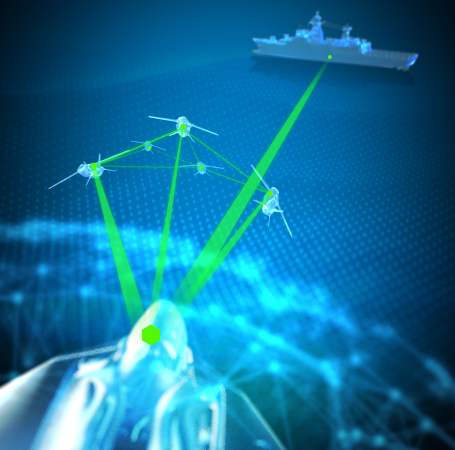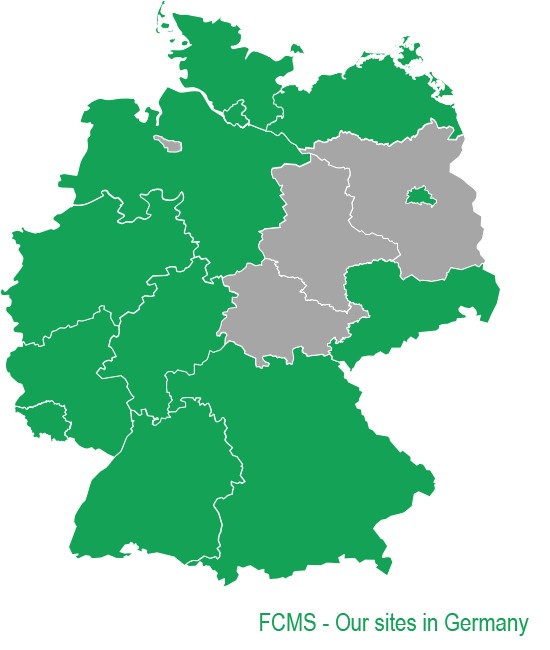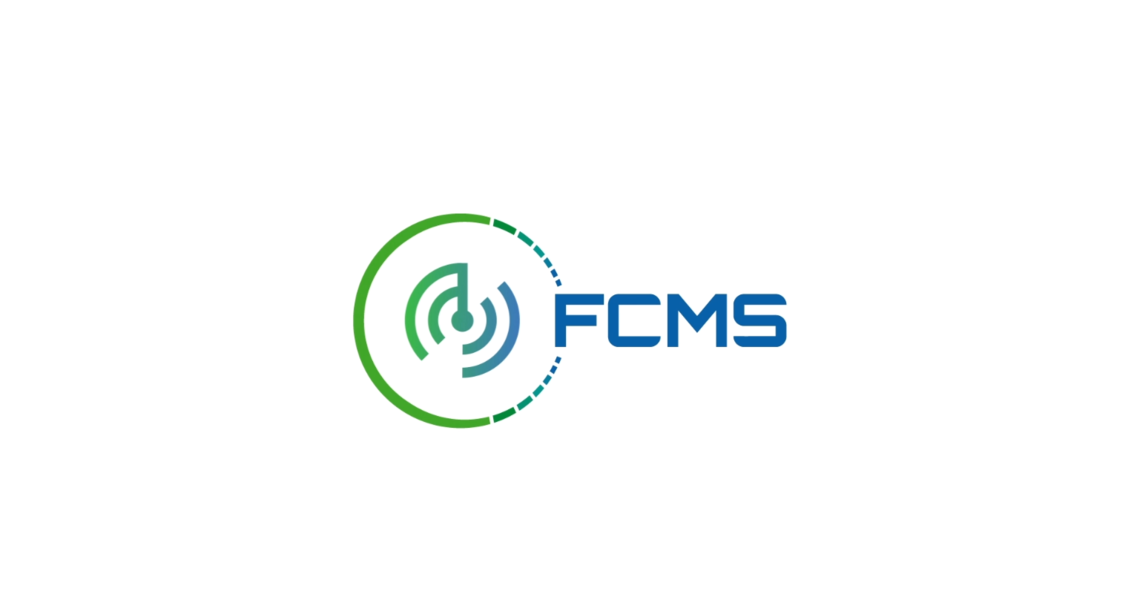In FCMS, four independent traditional German companies bundle essential key technologies from the aerospace, security and defence sectors. Their aim is to ensure that the yet-to-be-developed Future Combat Air System is digitally networked in a secure, trustworthy and robust manner and will be managed together with European partners.
OPERATING OF SENSORS AND EFFECTORS IN A NETWORK
When evaluating the planned capabilities of future opposing air defence systems, various technological trends can be identified. For example, there will be numerous further developments in the fields of multifunctional reconnaissance (passive as well as active) and target locating, electronic combat and air defence missile systems. These capabilities will be integrated across all performance dimensions by networking and automation to form one agile overall system. An air defence network developed in such a way, including different sensors and effectors at the corner stones, will represent a highly dynamic and complex threat potential for air operations of a NGWS team. It is vital that a flexible and robust answer to this challenge is found.
The NGWS team must therefore create a network of its own, equipped with appropriate capabilities and linked to the corresponding sensor and effector technology This is the best way to ensure that opposing air defence networks can be effectively tracked, targeted and engaged. For this purpose, a large number of tasks in the fields of reconnaissance, target detection, target recognition and tracking and target engagement (kinetic and electromagnetic) as well as self-protection need to be coordinated and implemented synchronously with the highest level of precision and in an highly automated way. Humans must be integrated into the decision-making processes.
Thus, a multidimensional "4π meta sensor-effector system" needs to be established where "4π" describes the entire volumetric space. This allows the required fast orchestration within the integrated sensor-effector network, not only as a counterbalance to the ground-based air defence networks of the enemy but also to the enemy's own FCAS and NGWS equivalent systems which are to be expected. This multifunctionality ensures that single sensors and effectors, for example, are able to perform several tasks simultaneously. Already today there are methods which are paving the way in this direction, for example e-scan radar systems or distributed apertures of passive sensor systems that are able to carry out several tasks synchronously, using for example electronic jet-efflux control and appropriate resource management.

These capabilities of the sensor-effector network must be integrated vertically into the mission system and horizontally across all performance dimensions in a service-oriented approach. The task is: perform and operate faster and more precisely (with the help of real-time capable sensor-effector networks/subnetworks) in the network than the enemy! It is essential that information is condensed adequately and smoothly across all levels of integration. Lieutenant General David A. Deptula (Air Force Deputy Chief of Staff for Intelligence, Surveillance and Reconnaissance) recently identified a worst-case scenario which must be avoided which is the risk of "swimming in sensors but drowning in data" scenario.
Smart sensor systems in particular will make an important contribution to this. Supported by (AI) algorithms, these will adaptively generate a basic tactical information and data base that can be further aggregated and fused flexibly and interoperable at higher levels This allows the goal-directed generation of a suitable information basis with required availability and reliability: the basis for an evaluation of the situation and for the decision support system of the pilot.

It is clear that, only the availability of a robust network makes this possible, and this in turn requires high-performance and secure datalinks. The high speed and agility of the involved actors require responsive and low-latency radio technology and procedures. The latter must also be interference and jam proof as well as difficult to detect and need to provide a high range while supplying a high data rate. Information protection by means of powerful crypto systems and with an inherent insensitivity to cyber-attacks are necessary due to the criticality of missions and the sensitivity of data. Specific applications requiring the use of video or image data transfer simultaneously call for even higher data rates. The combination of these demanding characteristics needs to be brought into service with low energy consumption and a small footprint to be able to operate agile airborne platforms of different sizes (e.g. small scale UAS).
For the fulfilment of the above-mentioned requirements the use of directional antennas (AESA = Active Electronically Scanned Array) will be indispensable and these will need to be placed at various points distributed over the platforms to enable a complete, spherical (hence 4π) radio coverage in space. In keeping with the required multifunctionality, these antennas will also partly need to support additional capabilities such as those of electronic combat. Furthermore, AESAs must be adapted to the size of the flying platforms to not compromise their low detectability.
Future-proof solutions must meet suitable framework conditions in order to be able to provide a multidimensional "4π meta sensor-effector system". In addition to a suitable basis of different multifunctional sensor and effector systems and data links, flexible interfaces to and the capabilities of mission management functions need to be taken into account. The integration into a variety of platforms as well as into the C4I environment entail additional framework conditions. Accompanying to this, a suitable framework in the fields of education, mission planning, mission implementation as well as mission post-processing but also logistics needs to be established. The objective must be to implement the functionalities of networked effector and sensor systems, independent from a specific platform as well as across all performance dimensions (Air, Land, Sea) to allow the most effective use by the armed forces.


Apart from technological framework conditions and the availability of related resources, the following aspects play a decisive role: All national and international partners involved must be committed to teamwork in the best interest of a joint & combined mission. The goal must not be to depict today's status quo, but to prepare today what will be possible and necessary in 2040 and to achieve it step by step – the FCAS version 1.0 must constitute full operational capability, a "minimum viable product" is not sufficient.
The companies Hensoldt, Diehl Defence, ESG and Rohde & Schwarz decided to pool their skills in the industrial consortium FCMS in order to push forward the structure of this complex capability in its technological breadth and depth. Through close cooperation with national and international partners, the industrial consortium FCMS will ensure that the upcoming challenges for the NGWS development will be successfully overcome.
Indra together with FCMS and Thales kick off next design phase of the networked suite of sensors contributing to superiority of Next Generation Weapon System (NGWS)
With the german companies Hensoldt Sensors GmbH, Diehl Defence GmbH & Co. KG, ESG Elektroniksystem-und Logistik-GmbH (part of the HENSOLDT Group) and Rohde & Schwarz GmbH & Co. KG , the industrial consortium FCMS concentrates essential core competences of relevant national key technologies for the FCAS/NGWS program in this field under one roof.
- FCMS offers a broad and technologically well-founded national technology expertise for the FCAS/NGWS program and thus ensures the required national contribution and future viability in the field of the 6th generation of mission systems
- Cooperative partnership with leading research institutes and universities
- The involved companies provide more than 16,000 employees in high-tech jobs in Germany and more than 22,400 employees worldwide.
- Together the companies cover more than 80 % of German key technologies in NGWS and hold more than 7,600 patents, most of them relevant for NGWS.
The FCMS sensor-effector network will provide the game changer for operations provided as of 2040.


